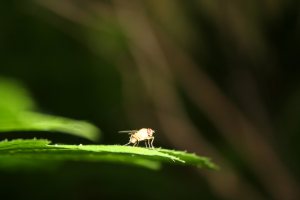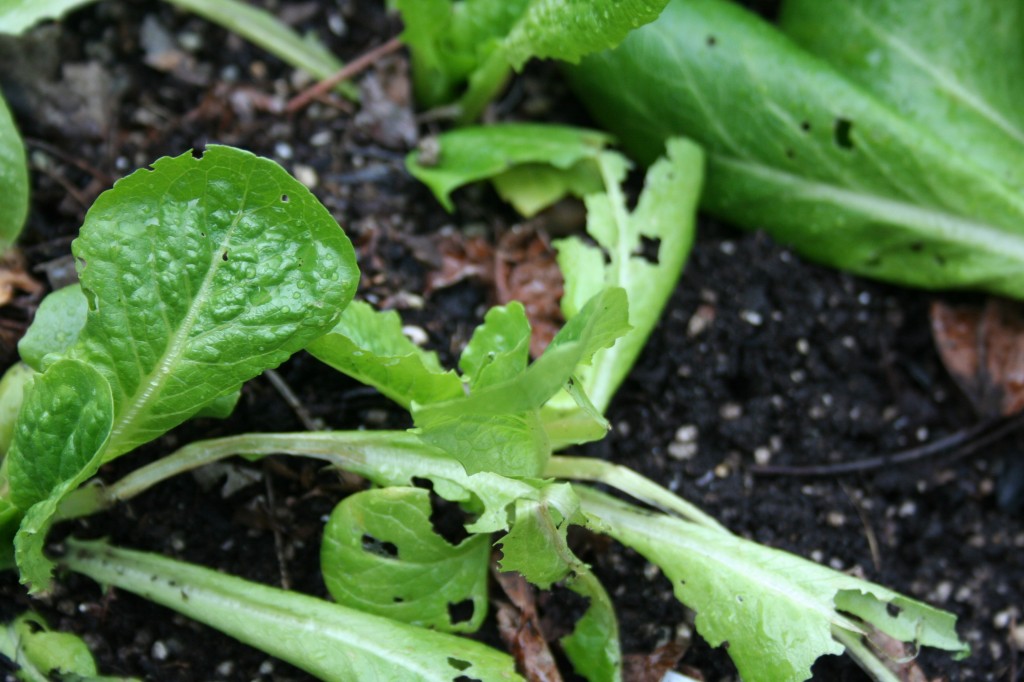Blog for the not so beautiful things out there
15.9 years ago birds, potatoes, slugs
I see many blogs showing pictures of pretty flowers and cute little animals, when I was going on a nature hike today with my youngest daughter I came across some things that were interesting but not exactly beautiful which deserved some recognition.
If I saw this guy in my garden I probably wouldn’t be an inclined to stop and take his picture.
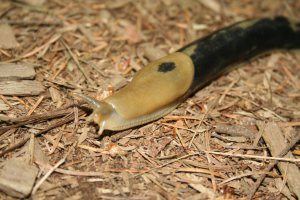
Well potatoes are not that pretty so guess I wouldn’t expect the flowers to look much better
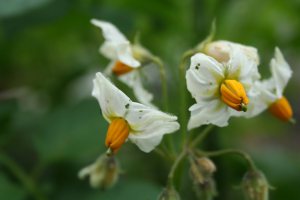
Tags: birds, cheap, vegetables
Attracting birds in your garden/yard
15.9 years ago birds
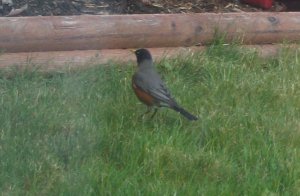
There are many benefits of having birds in your garden. The most obvious being the songs they sing in the morning and throughout the day. Now if you are not a morning person this may be a negative, but there are definitely more obtrusive ways to be woken up.
Birds can directly help your garden by eating weed seeds they find throughout your lawn and garden. Like singing, this can be a blessing and a frustration due to the fact they have not learned the difference between those peas you carefully planted and the weed seeds that you really want them to be consuming. Given that I take care of my weeds organically I can definitely appreciate the help of the birds.
Birds also like to snack on insects, like seeds the birds are not indifferent to the pests and the beneficial insects, so they may gobble up some of your spiders, ants, beetles, and worms (ok not an insect) but they are also are nice enough to eat aphids, grubs, Japanese beetles. Some birds such as swallows can eat 100s of bugs in a morning snack.
If you have decided that you want to attract more birds to your garden, what are your options? Like most creatures they have three simple necessities: food, water, and shelter.
Food: Feeding your birds is pretty easy, above I mentioned some of the benefits of the insects and weed seeds that your birds can feast from. There is the obvious bird feeder and given the seeds/food you choose can help determine the species birds you will have visiting. For example most songbirds prefer black oil sunflower seeds, while white millet is preferred by most ground feeding birds. Now of course the more food your birds are eating from your feeders the less pests and weed seeds they are eating from your lawn and garden, but the feeder should attract more birds to your lawn/garden so best to keep those feeders full.
Water: Birds need water to drink but also bathe in, now you can invest in something aesthetically pleasing like this one (click below):
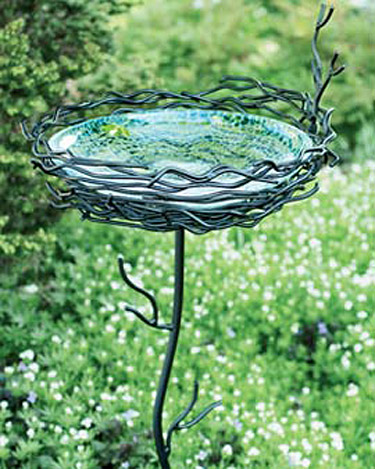
If you are on a budget you can always make your own, basic requirements is needs to be less than 3 inches deep and have a comfortable surface for the birds to perch on. Some ideas are metal garbage can lid, circular planter, or even larger pot drip pan. Simply place on the ground of on top of some shrubbery, rough up the bottom of the surface with some steel wool and water. You will want to clean your bird bath about once a week with a diluted bleach solution (3/4 cup bleach to 1 gal water) since unfortunately the birds may use their bath occasionally as a bathroom.
Shelter: Shelters give animals a place to nest and/or hide from predators. Now there are two types of shelters natural and man-made. If you have some well established trees and/or shrubbery you probably have some birds already living with (whether you know it or not) Like many people I live in a relatively new development (< 5 years old) so most of the trees in my neighborhood are still developing so I opted to supplement with an man-made solution, the classic birdhouse. I couldn’t find the instructions I actually used but here are some free instructions to create a similar birdhouse from a single cedar fence picket. Not sure if you can tell from the picture but everything did not line up exactly as it should but it should keep some birds dry and safe and the girls had a great time “decorating” it.

Whether you just want to attract more birds to hear singing in your backyard or you want to put them to work getting rid of pests and weeds in your lawn and garden doing the steps above should give you plenty of both.
Tags: birds, cheap, garden seeds, organic vegetables, outdoor plants, vegetables, worms
How to deal with slugs in the garden
16 years ago slugs
Living in the Pacific Northwest there is no way to get away from these slimy creatures. Last year I only saw a few of these creatures but apparently my veggie plot must have been identified and they told all their friends since I am currently planting my second set of cilantro and lettuce seeds since they ate up my little seedlings.
Now how do I deal with these creatures? The first thing you should do is take care of your plants remove any dead/dying/diseased leaves to not give those slugs a tempting meal and a place to hide. In late spring make sure you turn/rake your soil this will disturb hibernating slugs and expose eggs which should be picked up by birds and/or killed by the first fall frost, which should start your garden to a better start the following season. Until then, here are a few methods to help free your garden from slugs this season:
Copper: Not going into the science but when a slug touches a path covered by copper they will get a tiny electrostatic shock which will deter them to go elsewhere. Now given my garden is surrounded by cinder blocks so attaching copper tape around my garden would be very difficult. The copper strips also can have sharp edges with is bad for slugs but also for me and my little one’s fingers. I have seen copper rings that attach to the underside of pots to prevent them from climbing up, which seems like a viable option if slugs find the contents particular appealing. It may very well be cheaper to throw a few handfuls of shiny pennies around but probably not the most attractive mulch.
Abrasive surfaces: Slugs have very sensitive undersides so laying and abrasive material blocking their path can kill or annoy them enough to head off to another direction. Some choices are broken egg shells, Epsom salts, ashes, coarse sand, and diatomaceous earth marketed for this specific purpose.
Slug traps: There are many methods to bait and kill slugs. Probably the most well known is the beer trap where you poor some beer in a shallow container at ground level where the slugs come in for a drink and drown. Couple others to try is corn meal and grapefruit, apparently they love them but after ingesting it will kill them.
Poison (Snail/Slug bait): Now in many cases this is the most effective method but definitely not the best option for the environment. Most “Snail/Slug bait” contains an ingredient called metaldehyde which a small dosage (around 200 mg per kg) can kill neighborhood cats or dogs as well as birds which are a very effective means of controlling slugs.
Slug deterrents: There are many baits that contain iron phosphate instead of metaldehyde which can also be very effective and actually sweeten your soil at the same time, so be sure to check your labels. One product that has worked for me is “Worry Free Slug and Snail Bait” (similar product to “Sluggo” or “Escar-Go”) the stuff does not kill the slugs directly and is safe for your vegetables and your neighborhood animals. You simply spread the granules around areas your slugs are visiting and after the slugs have a taste they lose their appetite and leave your garden or dies of starvation.
Become a slug exterminator:Though pretty gruesome you can simply hand pick and destroy the slugs yourself. Now this is very effective method but definitely not advisable for the squeamish. Some methods are impaling, bisecting, throwing in boiling water, stomping, salting, spraying with ammonia, or use your imagination. If you have problems finding them try going for a late walk in your garden with a flashlight or lay some carpet in a portion of your garden and check under it every few days.
Tags: birds, cheap, cilantro, garden seeds, led, outdoor plants, vegetables
Make your Garden/Lawn into a gigantic worm bin
16.1 years ago alfalfa pellets, vermicomposting, worms
My soil is consisted of a high percentage of clay, as a result I am required to aerate my lawn twice a year to avoid my soil getting too compacted. I am cheap so I purchased a $10 aerator from Home Depot which I walk around the lawn giving it a nice look of a goose bathroom until the next good rain or mowing. Of course nature has an answer which is the garden earthworm. As a finished limping behind my aerator I thought how can I get more earthworms to do some of this work for me, which brought me to the conclusion to turn my lawn and garden to a gigantic worm bin.
As worms wiggle through the ground they break up the soil and provide pathways for water and air to flow and while they are at it drop their nutrient castings along their way. Now looking at my tips on how to care for a worm bin, the same principles apply to doing the same on a larger scale. Our course my wife and HOA would appreciate me just throwing our kitchen waste out in our front yard so I have to be a little more creative. For organic matter to feed the worms (and the lawn) I will be using alfalfa pellets and grass clippings (mulch) As for moisture, given I live in the Seattle, WA area our frequent rains take care of this until mid summer where short frequent watering will keep the grass and the worms happy. I will avoid chemical fertilizers, herbicides, and pesticides using organic options to control weeds and pests and occasional application of alfalfa pellets to fertilize the lawn.
At this time the results look good the lawn looks great and I have definitely seen an increased number of worms in my garden and yard. The birds have also noticed and are taking advantage of my increased population and taking care of some of the excess in my lawn (guess it is better than them eating my seeds planted in the garden)
Just as a warning like everything in life too much of anything is normally not a good idea which can apply to worms as well. Worms can move enough soil and leave piles of castings on the surface which can create a lumpy lawn, which as long as you don’t have a putting green for a lawn this will probably not be unsightly and on the next rain will give some extra nutrients to your soil/lawn. Given the current state of my soil I have quite a while until I am burdened with having too loamy soil and need to be concerned on how to drive the worms away.
Tags: alfalfa pellets, birds, cheap, compost, garden seeds, organic vegetables, outdoor plants, vegetables, worms
